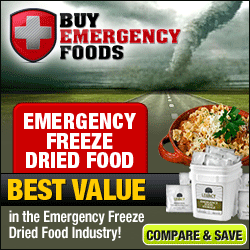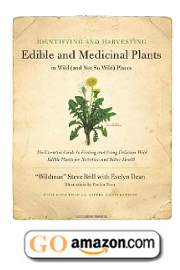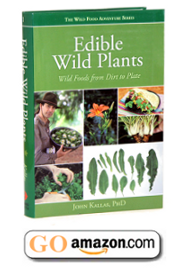Food Preservation for Beginners
The turbulent nature of our times has made our culture much more aware of the importance of emergency preparedness and particularly in regards to food storage. There are now plenty of places to turn to in order to get help in acquiring a good store of emergency food. Although the competitive nature of the industry has driven prices down and made food storage more affordable than ever before it still requires an investment (both financially and in terms of effort) so it is important to learn how best to preserve the food you are purchasing. There are plenty of ways to stretch the shelf life of food storage items and doing so will help you save a lot of money while still maintaining the peace of mind that comes with a full supply of food storage. The two basic areas that should be considered are processing methods and storage.
Picture Credit- Bormioli Rocco Fido Jars
Processing Methods
The way that a food is processed has great impact on the length of its shelf life. Some of the most common food preservation processes include drying, canning, freezing and vacuum sealing. Most of the equipment needed for these processes can usually be found right in your kitchen but there are some methods that require additional and specialized equipment.
Many foods can be easily preserved and some methods work better for certain foods than others so take the time to do a little homework before beginning the process. These processes are generally quite simple so mastering the technique won’t take more than a couple attempts.
Storage
Where and how you store your food is crucial to maintaining its longevity, regardless of the process of food preservation used. In many cases it can be difficult to find space for all of your food storage. Be creative and take advantage of space around your home that is unused and out of sight. The type of container used is also essential in the storage process and it differs greatly depending on the type of food and type of preservation used. Here are some of the basics to keep in mind.
The highest priority should be given to keeping food storage dry. Keep your food in areas that are unlikely to become flooded (next to water heaters or plumbing pipes, for example). If you are limited on space and have no choice other than storing food in such areas, make sure to put the food in water resistant containers.
Temperature is also an important factor to keep in mind when considering how to store your food. Most foods do not need to be frozen after undergoing other preservation methods but even those foods should be kept out of extremely warm temperatures and direct sunlight. Areas such as crawl space, basements, cupboards, space under beds, closets, and space under stairs are all examples of common but effective storage locations.
The types of containers used is another aspect that shouldn’t be overlooked. There are now plenty of options available for shelving, containers and racks that are engineered specifically to store bulk food and there are many other containers that can be repurposed easily to effectively store your food
Materials such as plastic, tin or glass are great for individual containers because they are more likely to be airtight and water resistant. These types of containers can then be grouped together by category into larger boxes or crates to use space efficiently. It is also a good idea to avoid excessively large containers or deep shelves because it will make food rotation more difficult.
Lee Flynn is a freelance writer and outdoor enthusiast with interests in food storage.









